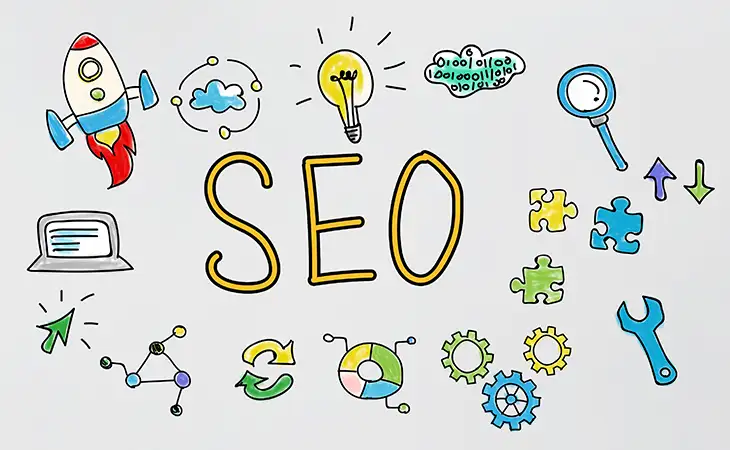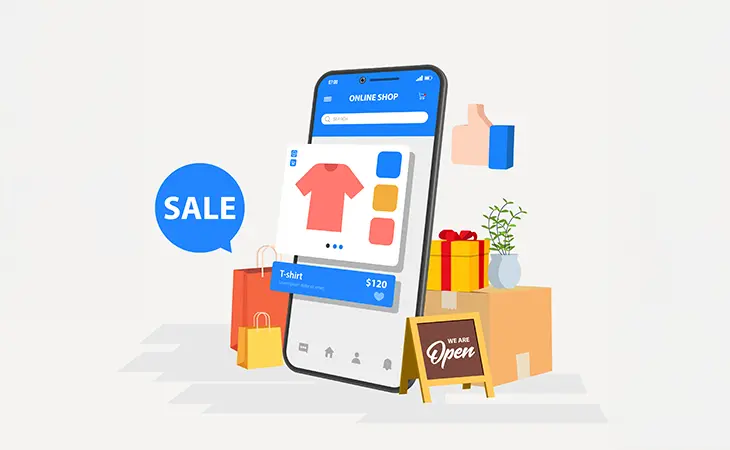As a business owner, surely you might have heard of the term “SEO”. It can sound like one of those fancy marketing buzzwords folks throw around at networking events. But if you own a small business and your website isn’t showing up when people Google what you sell? That’s money you’re leaving on the table, plain and simple.
This Beginner’s Guide to SEO for Small Business Websites will walk you through what SEO actually is, how it helps customers find you faster, and what you can do today to start getting results, no tech degree required.
What SEO Really Means (Without the Jargon)
SEO stands for Search Engine Optimization, which is just a fancy way of saying “help Google understand who you are and what you do.”
When your website is properly optimized, you’re not just guessing who might find you, you’re making it easy for the right people to land on your site when they search for your services.
Example: If someone types “best garage door repair in Broward County,” Google needs to know you’re a business that does exactly that. SEO is what connects the dots.
Why Small Businesses Need SEO More Than Ever
If you’re thinking, “My customers already know me,” that might’ve worked years ago. But today’s buyers Google everything. Even if they heard about you through a friend, they’ll check your website, read reviews, and compare you to competitors before calling.
A strong SEO strategy makes sure you’re showing up front and center, not buried on page three next to cat memes and outdated listings.
Without SEO, you’re basically running your business in the dark. With it, you’re flipping on the spotlight.
Step 1: Start With Keywords That Match How People Search
Keywords are the words your customers actually type into Google. They’re the bridge between your services and their needs.
For example:
“affordable web design in Pembroke Pines”
“24-hour plumber near me”
“best tax service for small businesses”
You can use free tools like Google Keyword Planner or Ubersuggest to see what people are searching for in your industry. Sprinkle those phrases naturally throughout your website — in your titles, headings, and descriptions.
Pro tip: Don’t stuff keywords. Talk like a human. Google’s smarter than you think.
Step 2: Optimize Your Google Business Profile
Your Google Business Profile (GBP) is a small business owner’s best friend. It’s that listing that pops up with your address, reviews, photos, and directions.
Make sure your profile:
Has consistent name, address, and phone (NAP)
Uses real photos of your team and work
Collects customer reviews regularly
Links to your website
If you need help, check out our article:
How to Set Up and Optimize Your Google Business Profile in 2025
Step 3: Make Your Website Mobile-Friendly and Fast
You could have the best content in the world, but if your site loads slower than a Sunday drive, people won’t stick around.
Use tools like PageSpeed Insights to check your site’s performance. Aim for quick load times and make sure your design looks great on phones – that’s where most traffic comes from nowadays.
Step 4: Create Content That Builds Trust
Google loves fresh content, and so do your customers. Start a blog that answers real questions your clients ask every day.
Example:
If you’re an HVAC company, write “5 Signs Your AC Needs Maintenance Before Summer.”
That content does three things:
Builds authority
Attracts search traffic
Shows you know your stuff
Over time, these pages become digital magnets for leads.
Step 5: Get Local Citations and Backlinks
A citation is just your business name, address, and phone number listed on trusted sites (like Yelp or BBB). A backlink is when another website links to yours, both are trust signals Google uses to rank you higher.
For more, read:
What Are Citations and Why They Matter as a Business Owner
Step 6: Track, Adjust, Repeat
SEO isn’t “set it and forget it.” It’s an ongoing part of your marketing, like checking your books or cleaning your tools.
Use Google Analytics 4 or Microsoft Clarity to track how people move through your website.
When you see what works, double down. When something doesn’t, tweak it.
Final Thoughts
The Beginner’s Guide to SEO for Small Business Websites isn’t about chasing algorithms — it’s about showing up when your customers need you most.
Start small, stay consistent, and remember: SEO rewards effort over time. The sooner you plant the seed, the faster it grows.
And if all this sounds like a lot? That’s where we come in.
At Rocket Web Designer, we don’t just build beautiful websites, we make sure people find them.
Further Reading
If you’re serious about learning beyond this beginner’s guide to SEO for small business websites, these resources will help you master the next steps in ranking higher and growing your digital presence.
- Rocket Web Designer – How to Set Up and Optimize Your Google Business Profile in 2025
- Rocket Web Designer – Best Local SEO Strategies for Small Businesses in 2025
- Rocket Web Designer – How to Rank Your Business Higher in Broward via Web Design
- Rocket Web Designer – What Are Citations and Why They Matter for a Business Owner
- Rocket Web Designer – Local SEO for Service Businesses: How to Dominate Your City in 2025
Ready to Fix Your Website for Good?
Let's Grow Your Business Online
From websites to automation, we’ve helped 100+ business owners grow online




